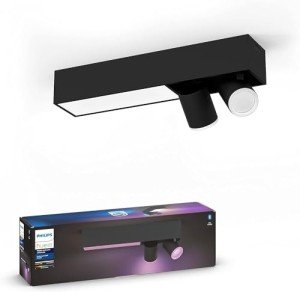Interior Lighting in the UK: A Comprehensive Guide
Interior lighting plays a vital role in creating an atmosphere, boosting functionality, and expressing individual style within homes and companies. In the UK, where the weather condition can be unforeseeable, reliable lighting is not only about visual appeals but likewise about making areas feel warm, inviting, and practical. This article delves into various elements of interior lighting, including types, patterns, tips, and frequently asked concerns.
Comprehending the Importance of Interior Lighting
Lighting is typically thought about the backbone of interior design. It influences state of mind, functionality, and the perceived size of spaces. The best lighting can:
- Enhance the architectural functions of a room.
- Emphasize art work and decor.
- Improve security and security.
- Influence performance in workspaces.
- Create a comfy atmosphere for relaxation.
Kinds Of Interior Lighting
Effective lighting style usually incorporates three primary kinds of lighting: ambient, job, and accent.
1. Ambient Lighting
This is the main source of light in a room, offering total lighting. Common sources consist of:
- Ceiling-mounted fixtures
- Chandeliers
- Recessed lighting
- Soft wall sconces
Ambient lighting creates a structure from which other lighting types can build on.
2. Job Lighting
Task lighting concentrates on specific locations to help with activities such as reading, cooking, or working. Table Lamps UK of lighting assists to lower eye pressure and can considerably affect functionality. Typical sources consist of:
- Desk lamps
- Under-cabinet lights in kitchen areas
- Checking out lamps next to beds
- Mounted lights targeted at work surfaces
3. Accent Lighting
Accent lighting adds drama and highlights particular items or areas, such as artwork or architectural features. This kind of lighting can develop visual interest and depth in an area. Sources include:
- Picture lights
- Decorative lamps
- Uplighters
- LED strip lights along shelves
Utilizing a combination of these lighting types can cause a well-balanced and multifunctional space.
Popular Lighting Trends in the UK
The interior lighting landscape in the UK continues to evolve, affected by style patterns, innovation, and consumer choices. Here are some popular trends to see:
- Smart Lighting: The advent of smart technology has transformed how people manage lighting in their homes. Smart bulbs and systems like Philips Hue enable users to manage brightness and color temperature by means of their mobile phones.
- Minimalist Designs: Sleek, easy styles that blend flawlessly with interiors are controling the market. Pendant lights with delicate frames, LED strips, and geometric shapes are particularly stylish.
- Industrial Lighting: This trend showcases raw, discovered materials. Metal fixtures and Edison bulbs provide a vintage touch that is both stylish and functional.
- Eco-Friendly Options: With increasing awareness of sustainability, numerous customers are turning to energy-efficient LED options and fixtures made from sustainable materials.
Tips for Effective Interior Lighting Design
Designing a reliable lighting plan needs thoughtful consideration of different aspects. Here are some tips:
- Consider the Purpose of Each Room: Every area has a different function. Consider what activities will happen and what kind of lighting will support those activities.
- Layer Lighting: Employ numerous types of lighting within a room to create depth and flexibility. Combine ambient, task, and accent lighting to improve both aesthetics and functionality.
- Usage Dimmers: Dimmers permit control over brightness levels, allowing users to change lighting according to state of mind and time of day.
- Incorporate Natural Light: Make the many of natural source of lights like windows. Usage light, reflective colors for walls and home furnishings to take full advantage of brightness.
- Consider Color Temperature: Different color temperature levels (determined in Kelvins) create various environments. Warmer temperatures (around 2700K-3000K) are relaxing, while cooler temperatures (4000K+) lend a more medical or energetic feel.
Interior Lighting Mistakes to Avoid
To produce a well-lit space, it's important to prevent typical lighting mistakes. Here are some errors to view for:
- Underestimating Wattage: Insufficient wattage can cause dim, unwelcoming areas.
- Neglecting Scale: Fixtures that are too small for a room can look out of location, while oversized fixtures can overwhelm a space.
- Over-reliance on Ceiling Lights: Relying entirely on overhead lighting can develop uninviting shadows; balance with additional lighting types.
- Poor Placement: Misplaced lights can create areas that are too bright or too dark. Plan positionings attentively.
Frequently asked question Section
1. What is the distinction in between warm white and cool white light?
Warm white light (2700K to 3000K) creates a comfortable, inviting environment, perfect for living rooms and bed rooms, while cool white light (4000K to 5000K) is more fit for offices as it improves concentration and clearness.
2. How can I take full advantage of natural light in my home?
To maximize natural light, use light-colored walls, tactically location mirrors to show light, and go with sheer window coverings that enable sunlight to travel through.
3. How do I pick the best light fixtures?
Think about the size of your space, the design of your design, and the function of the location. Guarantee the scale of fixtures complements the room and matches the total aesthetic.
4. Are LED lights much better than traditional bulbs?
Yes, LED lights are more energy-efficient, have a longer life-span, and can offer a series of color temperatures, making them a more sustainable lighting option.
5. What should I do if specific areas of my room remain too dark?
Think about adding additional task or accent lighting to brighten those locations. Floor lamps, wall sconces, or perhaps tactically placed table lamps can help reduce dark areas.
Interior lighting is a vital element of home and service style throughout the UK. Understanding the different types, existing patterns, and finest practices can help property owners in developing areas that are not only stylish however also functional. With thoughtful consideration and planning, effective lighting can change any environment, boosting both atmosphere and usability for several years to come.

